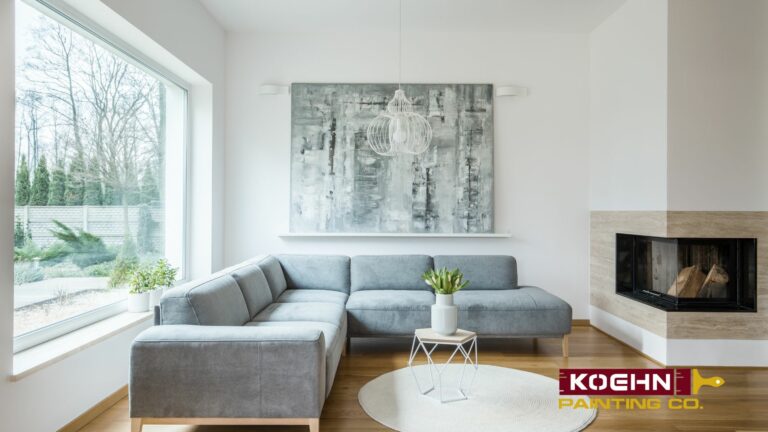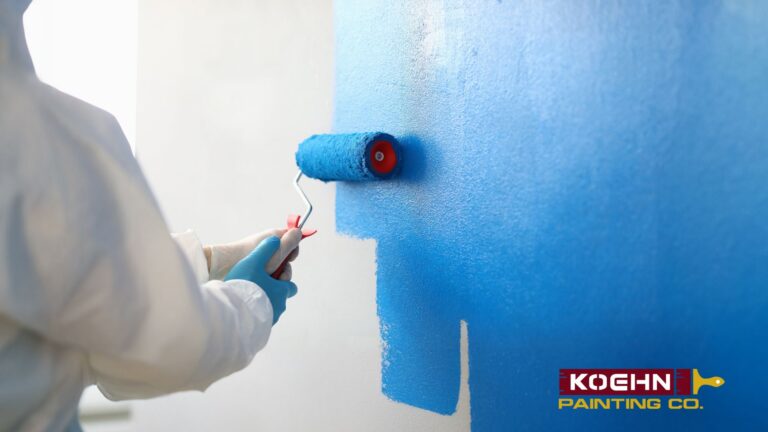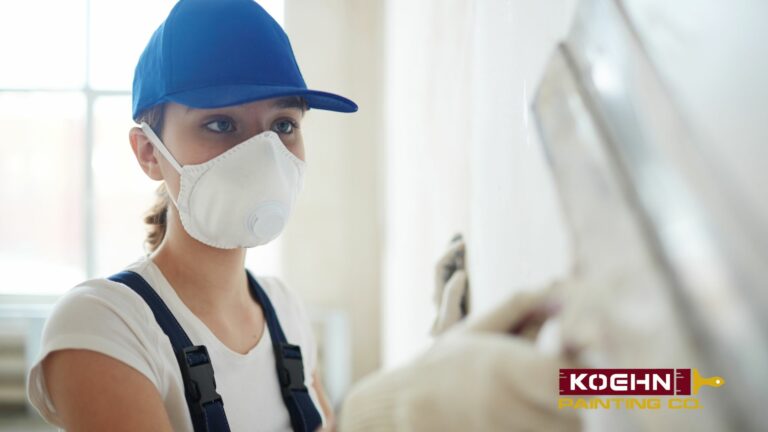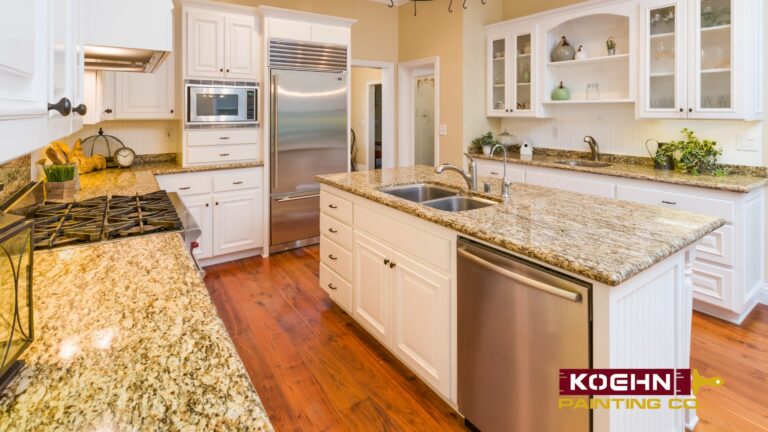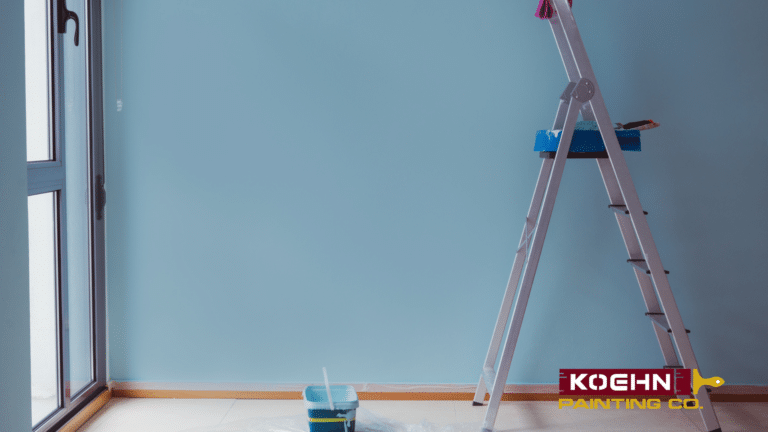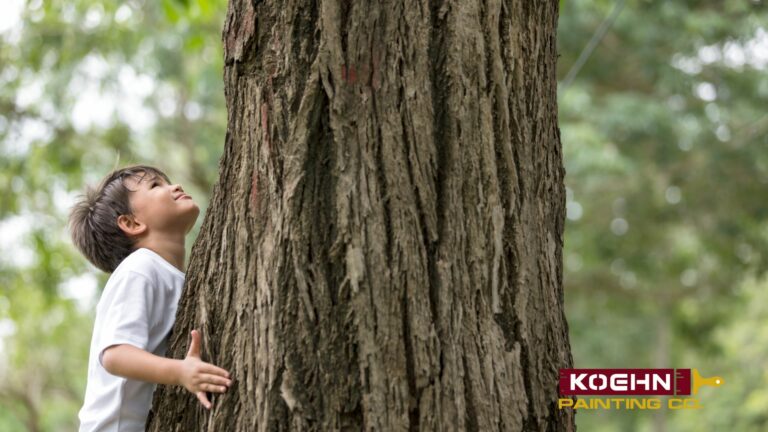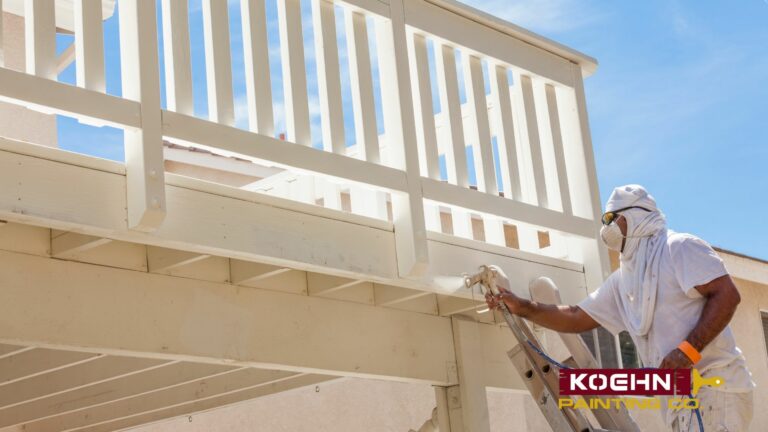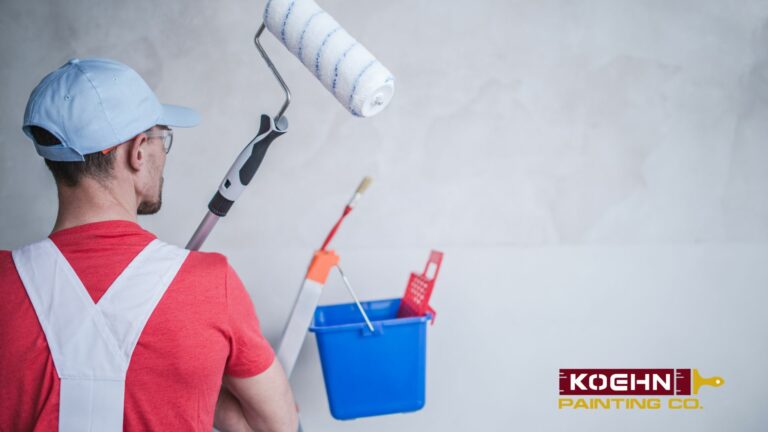How To Paint Over Wallpaper
Painting over wallpaper may seem like an unusual solution, but it is actually a practical option in many situations. Let’s examine why this technique is sometimes necessary—the cases in which people prefer to paint over wallpaper—and the main concerns related to this method.
Sometimes, painting directly onto wallpaper is the best choice for updating the look of a room without undertaking a paper-removal project, which can be time-consuming and labor-intensive. Painting can be a good alternative if the wallpaper is too difficult to remove due to tough glue or if it is attached directly to a plaster wall. This approach saves time and money while significantly changing the room’s look.
There are several scenarios in which homeowners choose to paint over existing wallpaper:
- Wallpaper quality: Painting over it can be effective if the wallpaper is in good condition, without air bubbles or damage.
- Limited budget: Wallpaper removal can be expensive, especially if it requires the intervention of professionals. Painting offers an economical alternative.
- Quick change: When you want to update the look of a room quickly, perhaps in anticipation of an event or a house sale, painting over existing wallpaper is much quicker than removing and reapplying it.
But despite the advantages, many hesitate to paint on wallpaper due to several concerns:
- There is a fear that paint will not adhere properly to wallpaper. However, by using the right primers and techniques, this problem can be overcome.
- Some may be concerned that the paint will cause the wallpaper to lift or peel. This can be avoided by ensuring the paper is well attached and in good condition before painting.
- The concern that painting will make future wallpaper removal more difficult is also legitimate. However, this risk may be acceptable if removal is not included in the short-term plans.
With the proper preparation and attention to detail, you can achieve satisfactory results without the inconvenience and expense of wallpaper removal. Many have overcome their initial fears to discover that this technique can provide a nice refresh to their home.
Can You Paint Over Wallpaper? An Expert Take
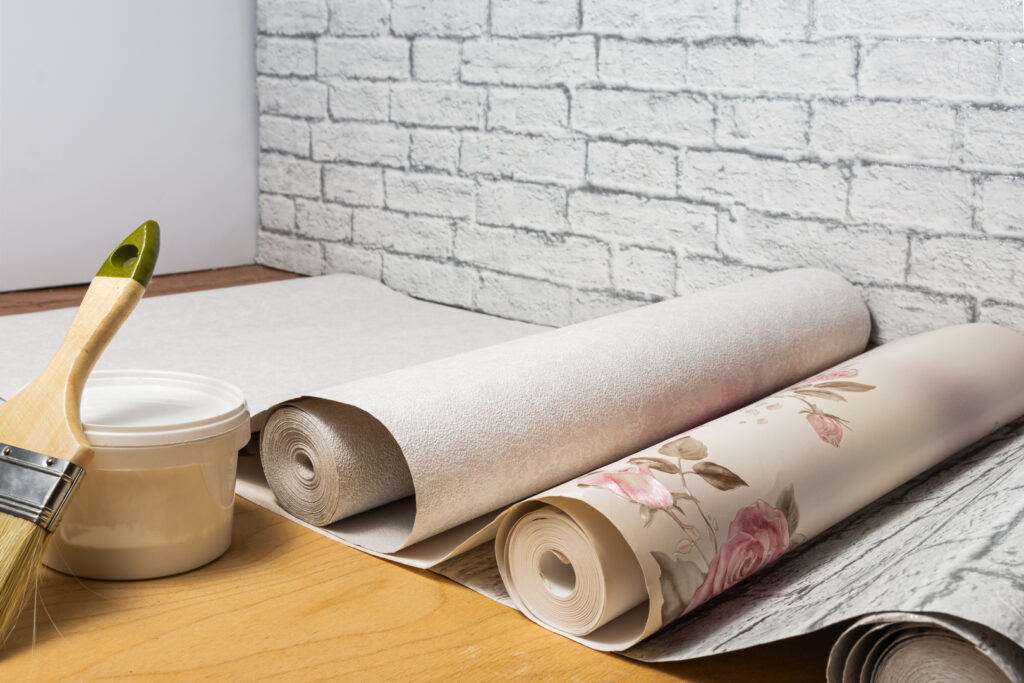
As we mentioned, painting on wallpaper is a practical solution for renovating without undertaking demanding work. However, the success of this operation depends heavily on the type of existing wallpaper and the conditions in which it is located. So, can you paint over wallpaper?
Paint over wallpaper is possible because many types of paper are sturdy enough to support a coat of paint. Wallpaper also offers a surface that, if properly prepared, can adhere well to paint. Before you begin, you need to ensure that the wallpaper is firmly attached to the wall with no air bubbles or loose pieces. It is also important to clean the surface from dust or dirt and apply a specific primer for wallpaper, which will help the paint adhere better and last over time.
Which types of wallpaper are well suited to this job?
The best wallpapers to paint on are those with a smooth surface and no noticeable textures. These wallpapers stick better to the paint and help avoid visible flaws. Wallpapers with a vinyl or acrylic finish are especially good because they can handle moisture well and don’t soak up the paint, which helps prevent damage. It’s generally not a good idea to paint on wallpapers that have heavy textures or embossed details, as these can make it hard to spread the paint evenly.
When is it really impossible to paint over?
While painting over wallpaper is usually doable, it is sometimes not recommended. If the wallpaper is old and starting to peel off the wall, the extra weight of the paint might make it peel more or cause whole sections to come off. Also, wallpapers with very uneven textures or those made from particularly absorbent materials, like fabric or natural paper, aren’t good for painting. These types of wallpaper may warp or get damaged when wet paint is applied.
How To Go About Painting Over Wallpaper
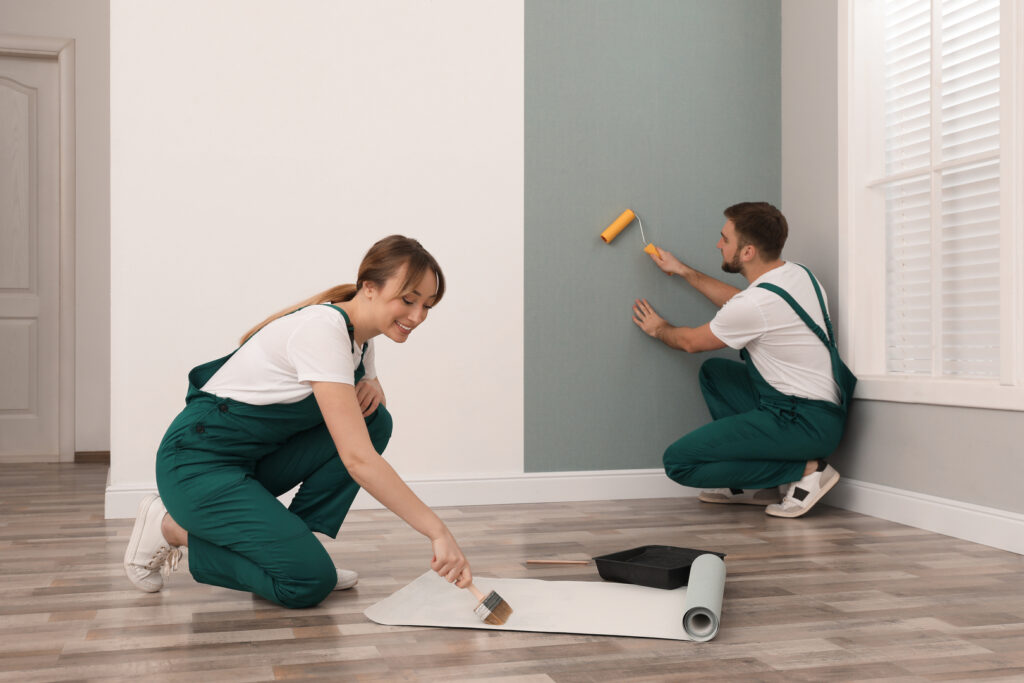
This guide will show you how to prepare for painting over wallpaper, what tools you need, and drying times. Follow these steps carefully to get the best result.
Surface Preparation
Before you start to paint over wallpaper, properly prepare the wallpaper to ensure that the paint adheres properly. Here are the steps to follow:
- Cleaning: Make sure the wallpaper is clean and free of dust. Use a soft cloth or brush to remove any surface dirt.
- Repair: Check for peeling or air bubbles in the wallpaper. Glue these parts with suitable wallpaper glue.
- Sealing: To prevent the paint’s humidity from damaging the wallpaper, you can apply a layer of sealing primer. This will also help mask any strong patterns or colors on the existing paper.
What kind of paint do you use to paint over wallpaper?
It is best to use acrylic or latex paint to paint on wallpaper. These paints are the best choice because they are humidity-resistant and have excellent surface adhesion.
Can you paint over wallpaper with just a tiny brush?
The answer is no! Here are the tools you will need to paint on wallpaper:
- Rollers and brushes: Choose medium-sized rollers to cover large surfaces and brushes for corners and edges.
- Paint tray: Essential for pouring and rolling paint.
- Tape: Use masking tape to protect edges, door frames, windows, and other items you don’t want painted.
- Protection sheet: To cover the floor and furniture and protect them from possible paint splashes.
After preparing the surface and gathering all the tools, you can start painting:
- Start by applying a layer of primer using the roller. Make sure you cover the entire surface evenly.
- Apply acrylic or latex paint after the primer is dry (usually after 4-6 hours). Two coats may be needed to achieve even complete coverage. Let each coat of paint dry before applying the next.
Drying times may vary depending on the type of paint used and environmental conditions, such as humidity and temperature. Typically, a coat of paint takes 2 to 4 hours to dry to the touch and up to 24 hours to dry completely.
Painting over textured wallpaper doesn’t necessarily take longer to dry than painting over smooth surfaces, but it can affect the drying process in a few ways. The texture of the wallpaper might hold more paint in its grooves and ridges, which could slightly extend the drying time because there’s more paint to dry. Be sure to allow complete drying before re-equipping the room.
Should You Paint Over Wallpaper? Conclusion
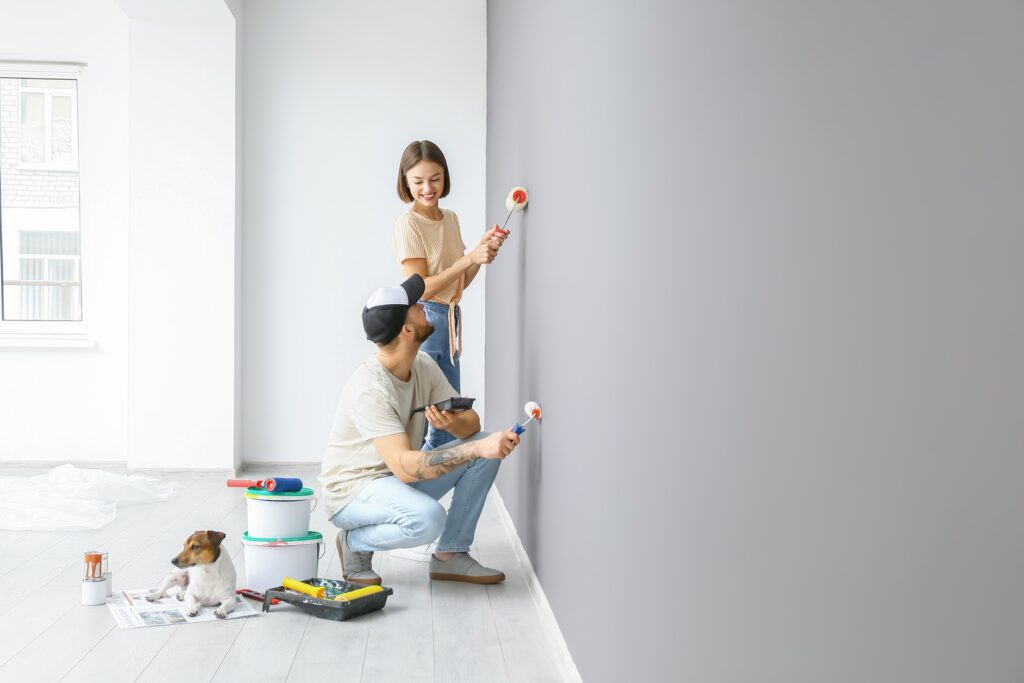
Pros and cons of painting over wallpaper
One of the main advantages that pushes you to paint over wallpaper is saving time, of course. Removing wallpaper can be a long and arduous process, especially if multiple layers have been applied over the years. Painting directly on top of the paper can make the job easier.
Another pro is the cost. You won’t need removal equipment to strip your wallpaper down, so costs remain low. Additionally, if the wallpaper is in good condition, with no air bubbles or missing pieces, adding a layer of paint could cover minor defects and freshen up the room.
However, there are also significant disadvantages. If the wallpaper has not been applied correctly or begins to peel, painting over it can cause long-term problems, such as mold growth under the paper due to trapped moisture. The texture of the paper may show through the paint, which can give an unprofessional look to the finished work, especially if it is your first time painting over.
Painting Over Wallpaper FAQs
- Is it necessary to prepare the wallpaper before painting?
Yes, it is important to ensure your wallpaper is clean and free of dust or dirt. It must also be well attached to the wall with no loose or damaged parts. It is recommended that you apply a coat of primer before painting to ensure better paint adhesion.
- How can I treat wallpaper seams before painting?
Seams can be treated by applying a thin filler strip to cover gaps or lifts. After application, you need to sand the surface to make the transition as smooth as possible before painting.
- What should you do if the wallpaper starts to peel after painting?
If this happens, remove the damaged paint and wallpaper and repair the wall underneath before proceeding with new decoration. This may involve more work than initially expected.
It is important to evaluate the quality and condition of the paper before proceeding. The result can be satisfying and long-lasting with the right precautions and preparations. If you are unsure about your house conditions, please contact us with any questions.
